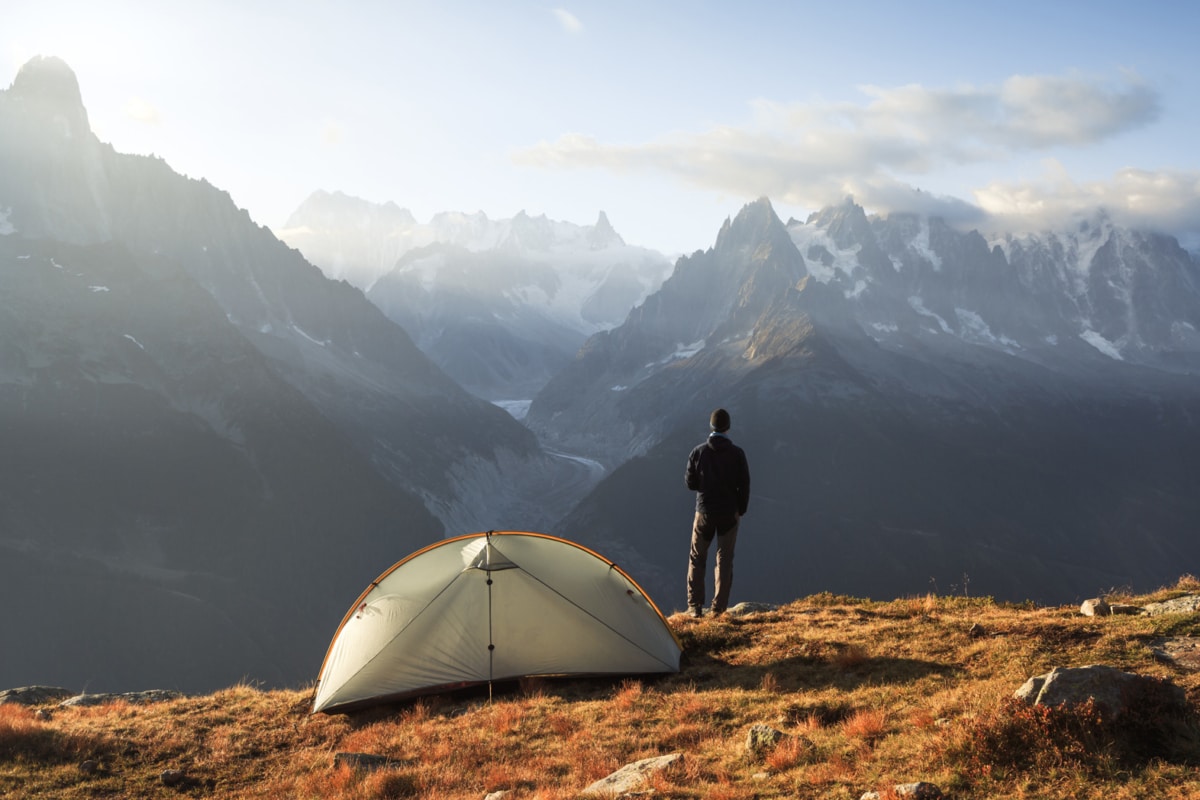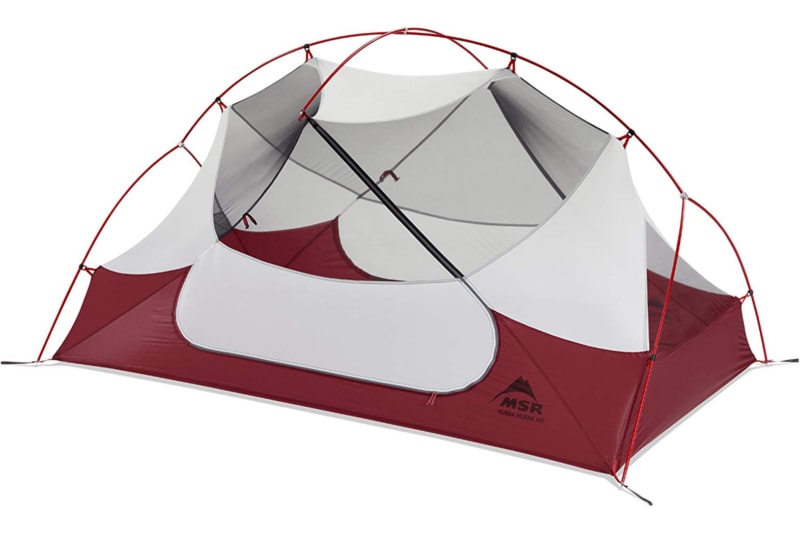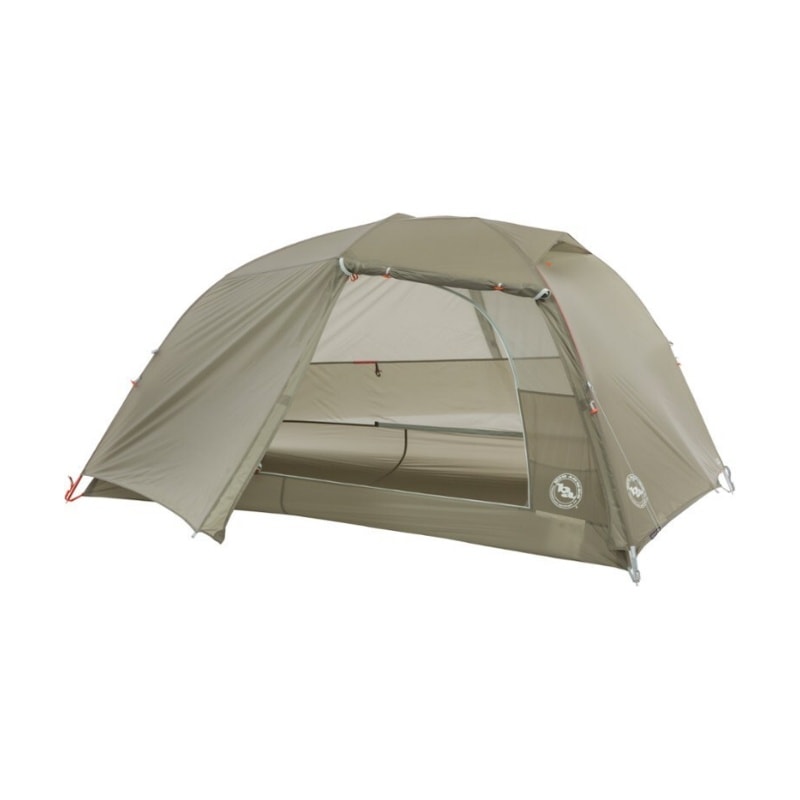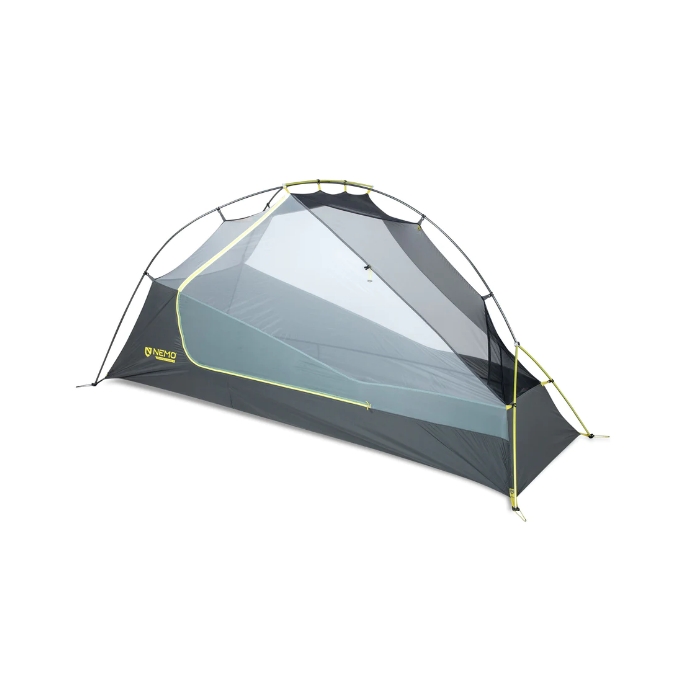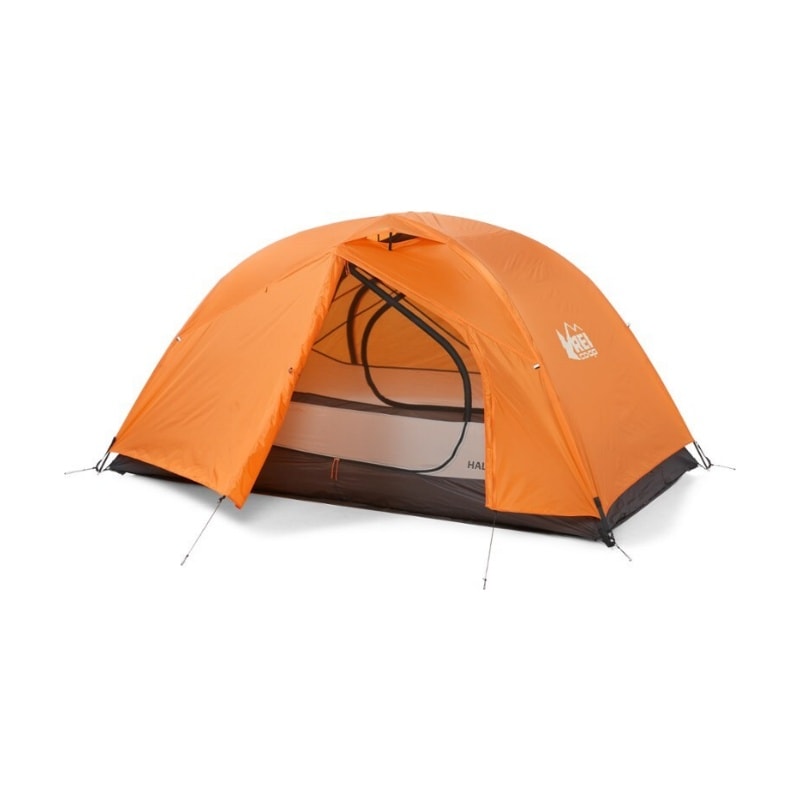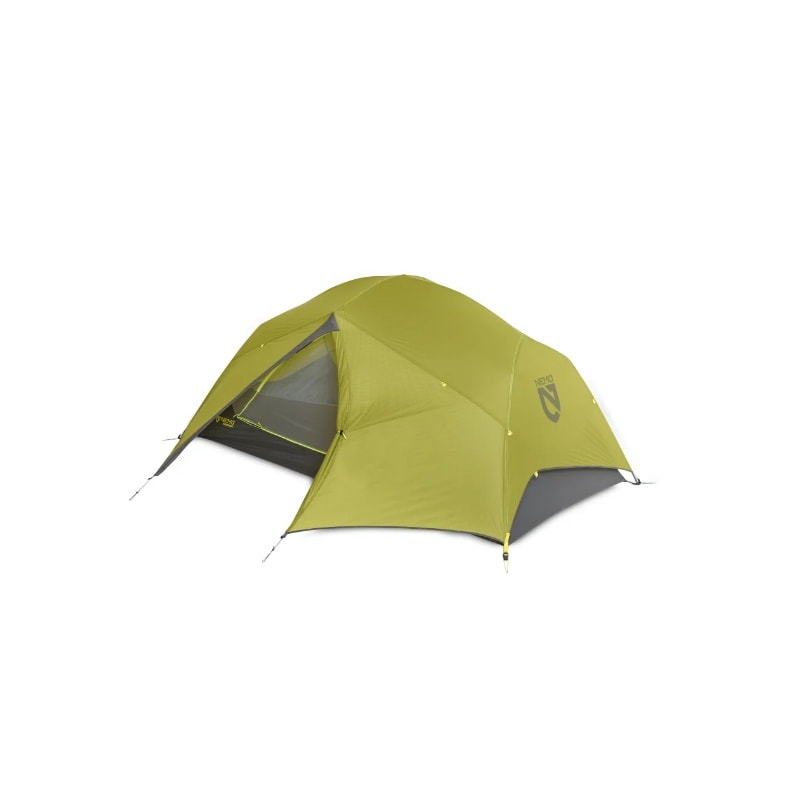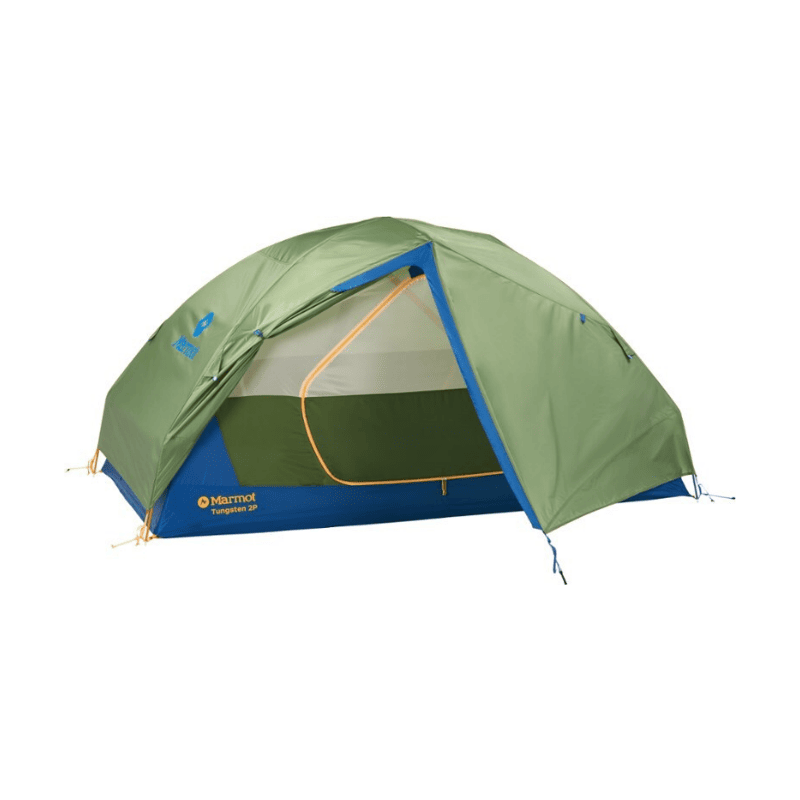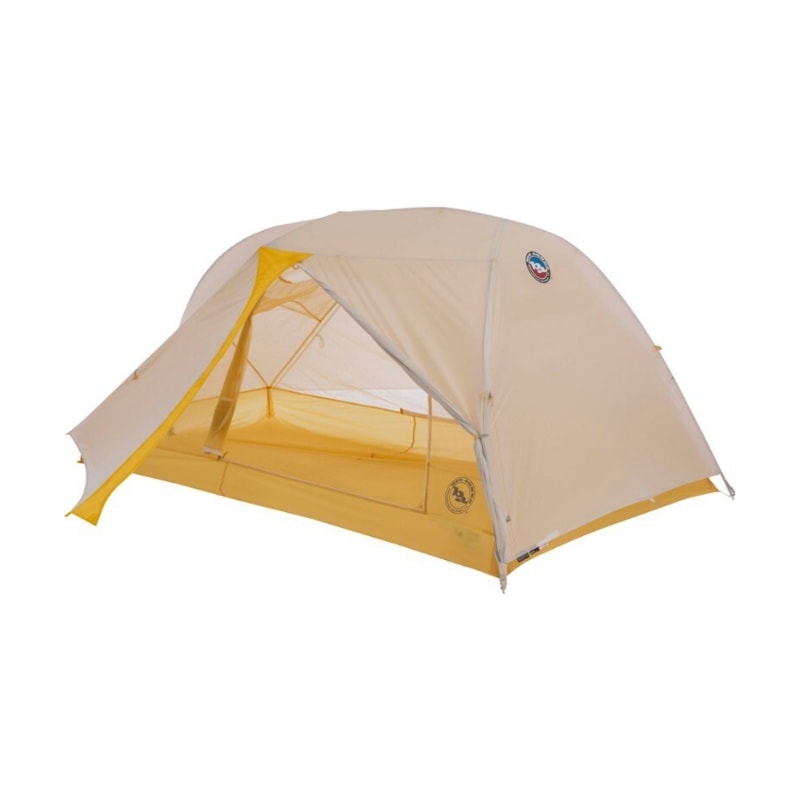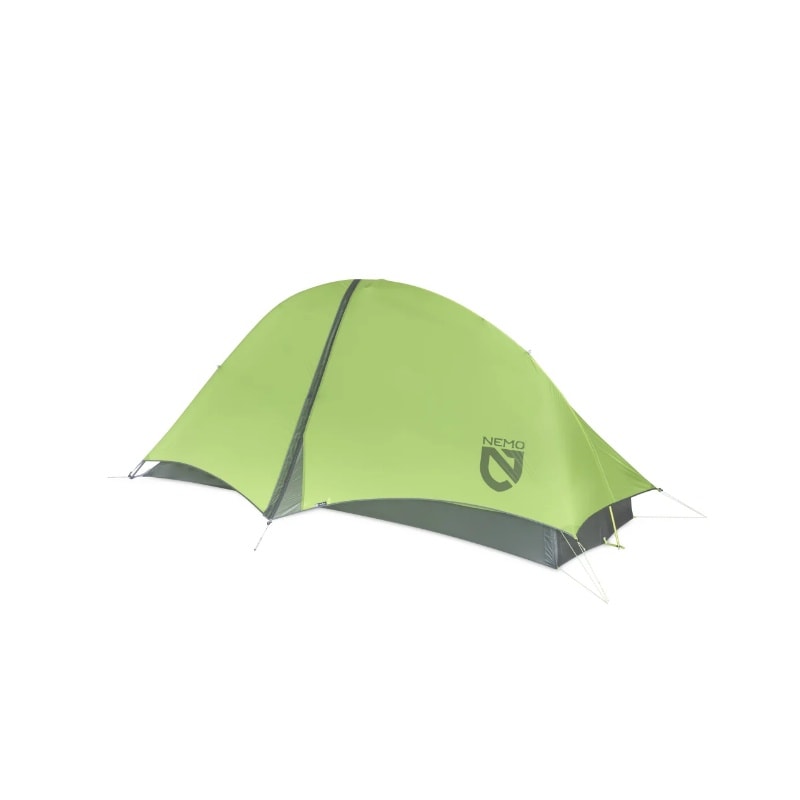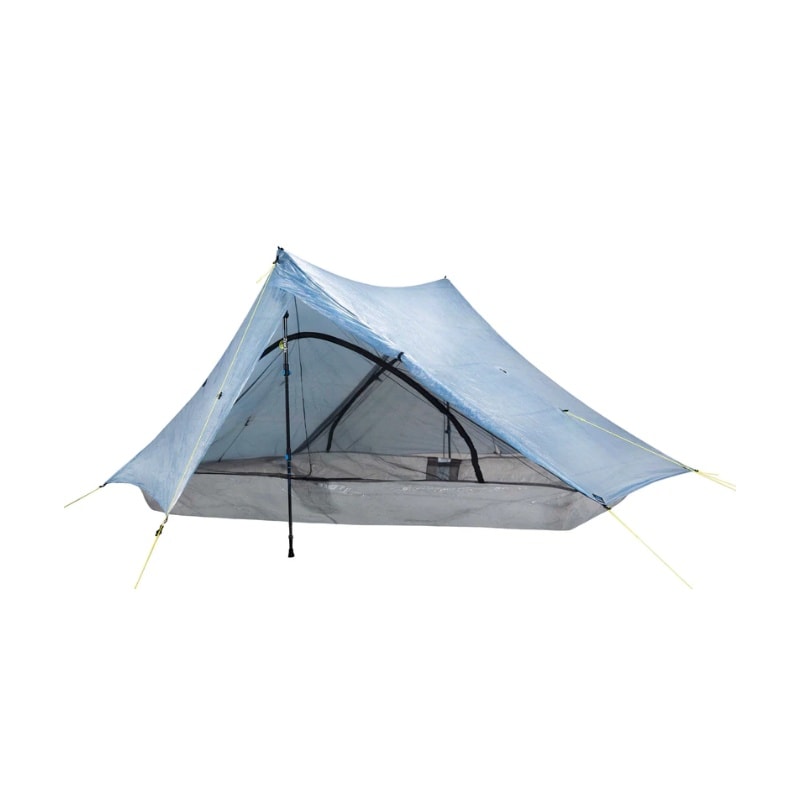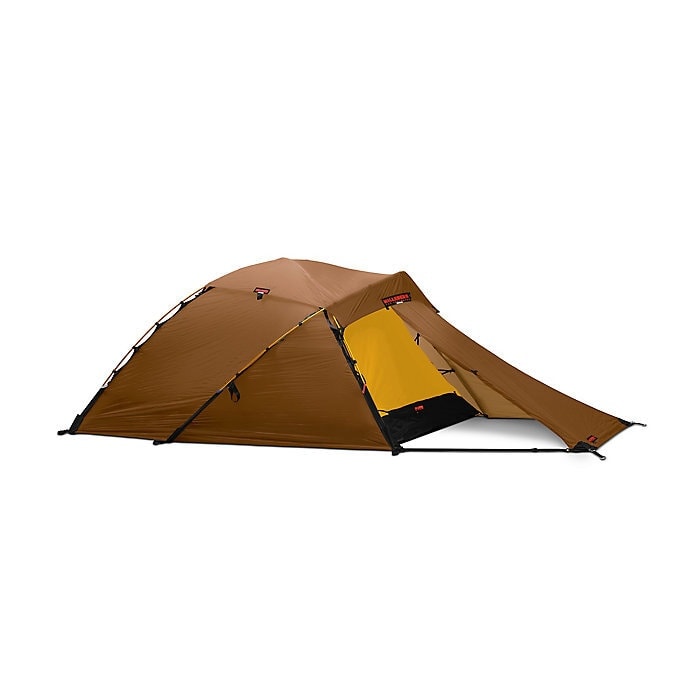From the ultra-lightweight minimalist designs to the beefier, fortress-in-a-bag tents, these are the ten best backpacking tents for every adventure.
10 Best Backpacking Tents of 2024
If you love camping outside, you already know how important it is to find the right backpacking tent. But finding the best one isn’t easy. There are just too many tents to choose from.
Sometimes it can feel like buying a new car with all the different features.
Do you want the backpacking tent with extra space, the ultralight backpacking tent, or the one that comes with that timeless wood paneling? (Side note: this doesn’t actually exist.)
These are difficult choices, indeed. And before you know it, you’ve spent more time shopping for a backpacking tent than you ever thought possible.
I’m going to help you fix that with this list of the best backpacking tents available on the market today.
You’re probably thinking, what makes a backpacking tent truly great? I’ve curated this list of tents to make sure you find the one that fits your needs. From the ultra-lightweight minimalist designs, to the beefier, fortress-in-a-bag-style tents, I’ve got you covered.
-
Our Top Picks
- Best Overall Backpacking Tent: MSR Hubba Hubba NX
- Runner Up Overall Best Backpacking Tent: Big Agnes Copper Spur HV UL
- Best 1-Person Backpacking Tent: Nemo Dragonfly OSMO 1P
- Best 2-Person Backpacking Tent: REI Half Dome SL+
- Best 3-Person Backpacking Tent: Nemo Dagger
- Best Budget Backpacking Tent: Marmot Tungsten
- Best Semi-Freestanding Tent: Big Agnes Tiger Wall
- Best Backpacking Tent for Rain: Nemo Hornet
- Best Ultralight Backpacking Tent: Zpacks Plexamid and Duplex
- Best Backpacking Tent for Mountaineering: Hilleberg Jannu
-
MSR Hubba Hubba NX: Best Overall Backpacking Tent

The MSR Hubba Hubba NX is an all-around winner that takes the cake as my all-time favorite as it doesn’t sacrifice too much space or utility for the sake of weight. MSR is one of the best tent brands on the market because they truly understand how to strike a balance.
The tent weighs three pounds, 13 ounces for the two-person version, and for that, you get enough space to fit two adults comfortably.
The tent also includes the standard two-door and two vestibule design. This makes it easy for two people to enter or exit and store all of their gear.
With an easy setup design and decent ventilation, it’s also a breeze to get into position quickly and remain comfortable once you’re inside.
If you’re looking for even more wiggle room for two adults to fit comfortably, the Hubba Hubba features asymmetrical design, meaning you can sleep head to toe to get a little more shoulder space.
The floor is also constructed of 30-denier ripstop nylon, making it durable enough for the trail, while still keeping it relatively light.
All in all, it’s a well-rounded and accommodating tent. Roomy enough, light enough, and durable enough to suit most folk’s needs on the trail!
- Technical Specs
Features 2 Person Minimum Weight 3 lbs 7 oz Packed Weight 3 lbs 13 oz Packed Size 18 x 6 in Peak Height 39 in Floor Area 29 sq ft Vestibule Area 17 cu ft -
Big Agnes Copper Spur HV UL: Runner Up Overall Best Backpacking Tent

Big Agnes clearly understands the balance between functionality, ultra-lightweight design, and comfort. The Copper Spur is another Big Agnes tent that comes in at almost exactly three pounds for a two-person tent, which is an impressive feat.
This tent manages to offer just a little bit more headroom, floor space, and vestibule space than its little brother the Tiger Wall. The additional space isn’t much, but maybe that’s the tipping point that makes this tent big enough for you. The Copper Spur is fully free-standing, and setup is easy.
As you might expect, the low weight of this tent makes it less durable than some of its peers. Like the Tiger Wall, the Copper Spur uses a proprietary double ripstop nylon. You really need to think about what you need your tent to do. If you’re roughing it off the beaten path, this ten’t durability may be an issue.
Despite its questionable durability, the Copper Spur is a fantastic tent midway between its lighter counterpart the Tiger Wall and the beefier/heavier tents such as the REI Half Dome and Marmot Tungsten.
- Technical Specs
1 Person 2 Person Minimum Weight 2 lbs 2 oz 2 lbs 12 oz Packed Weight 2 lbs 8 oz 3 lbs 1oz Packed Size 4 x 16.5 4 x 19.5 in Peak Height 38 in 40 in Floor Area 20 sq ft 29 sq ft Floor Dimensions 88 x 38/28in 88 x 52/42in Vestibule Area 9 sq ft 9 sq ft (2x) -
Nemo Dragonfly OSMO 1P: Best 1-Person Backpacking Tent

Nemo is another of the top brands for lightweight backpacking tents. They’ve created some impressive innovations over the past years, and their tents stand up with the best.
If you’re headed out on solo adventures, the Nemo Dragonfly OSMO 1P is a fantastic tent that balances weight savings with livability. There are lighter 1-person tents out there, but they usually compromise headroom and space.
This tent uses Nemo’s new OSMO fabric, a nylon-polyester blend that has 4x better water repellency and 3x less stretch when wet than previous Dragonfly tents. It’s also made of 100% recycled fibers, which is a big deal if you care about preserving the planet you love exploring.
The minimum trail weight is 2 lbs 1 oz, which is a bit more than some other ultralight tents, but not by much. With a peak height of 40 inches and 20.3 sq ft of floor space, this tent delivers a lot of space for that weight.
- Technical Specs
1 Person Minimum Weight 2 lbs 1 oz Packed Weight 2 lbs 10 oz Packed Size 5.5 x 19.5 in Peak Height 40in. Floor Area 20.3 sq ft Floor Dimensions 88 x 35/32in Vestibule Area 10 sq ft -
REI Half Dome SL+: Best 2-Person Backpacking Tent

Where the Quarter Dome trims and nit-picks features to reduce weight, the REI Half Dome SL+ maximizes your space and comfort and doesn’t shy away from that fact.
With vertical side walls to improve headroom, mesh pockets nearly everywhere you look, and enough interior space to make you feel like the king of the castle, these tents have everything you need—and they’re really reasonably priced (for tents, anyway).
But, a large tent at a low price point does come with its disadvantages—and in this case, that disadvantage is its weight. The one-person tent is a hefty four pounds, two ounces, and the two-person tent is four pounds, 15 ounces.
A lot of that weight is coming from the 70-denier nylon floor fabric—but that’s not entirely bad. The extra thickness significantly improves the overall durability of the tent. Combine this with generous storage under the 40-denier nylon fly and impeccable waterproofing, and you’ve got yourself your own wilderness fortress.
The extra weight is well worth the unparalleled comfort this tent offers. If you’re looking for something middle-of-the-road between the Half Dome and the previous ultra-light options, I have a few more options for you.
- Technical Specs
1 Person 2 Person Minimum Weight 3 lbs 11 oz 4 lbs 14 oz Packed Weight 4 lbs 2 oz 5 lbs 5 oz Packed Size 6.5 x 23.5in 7 x 20.5in Peak Height 40in 44in Floor Area 24.3 sq ft 35.8 sq ft Floor Dimensions 92 x 38in 92 x 56in Vestibule Area 11.75 sq ft 22.5 sq ft -
Nemo Dagger: Best 3-Person Backpacking Tent

Whereas the aforementioned Hornet is lightweight and portable, the Nemo Dagger focuses on durability and spaciousness.
At three pounds, 12 ounces for the three-person version, the Dagger is often compared to the MSR Hubba Hubba in terms of comfort and durability.
Like the Hubba Hubba, the Nemo Dagger also features a symmetrical design instead of tapered walls. This design choice helps to maximize the usable space for two people.
The Dagger offers lots of storage space thanks to its high-ceilinged fly cover vestibule space. This high ceiling is also evident inside the tent with a 42-inch height for some nice space to sit up.
This tent also features a 30-denier nylon floor, along with 15-denier fly and canopy fabric. This fabric is sufficient for serious backpacking.
Still, you’ll want to be careful when setting this tent up. The denier count isn’t as high as other tents, so it can get damaged from sharp objects. I recommend you purchase a tent footprint if you want to increase the lifespan of your tent.
- Technical Specs
3 Person Minimum Weight 3 lbs 5 oz Packed Weight 3 lbs 12 oz Packed Size 19 x 6.5 in Interior Height 41.8 in Floor Space 44.1 sq ft Floor Dimensions 90 x 70 in Vestibule Area 2 x 11.4 sq ft -
Marmot Tungsten: Best Budget Backpacking Tent

The REI Half Dome isn’t the only ruggedly-built backpacking tent out there. The Marmot Tungsten hits the sweet spot as one of the best tents for backpacking. It has a durable and lasting design that comes with a very budget-friendly price tag, making it the best budget backpacking tent on this list.
Even better? It has a 68-denier polyester fly and floor fabric, and equally as strong mesh and canopy. This means that the tent will hold up against whatever the trail throws at you. The ample amount of mesh on the tent body also allows for decent ventilation.
There are a few drawbacks to this tent, however. The noticeable increase in weight counterbalances the durable construction. The two-person version weighs in at just an ounce lighter than the REI Half Dome. But, it offers significantly less space inside. This is at least in part due to the tapered construction of the tent body. If you like a lot of space, this tent may not be for you. You cannot sleep head to toe in it.
The lower price of the tent makes up for many of its shortcomings. If you’re looking for an affordable and reliable tent, or just getting started with backpacking, this is a great choice. And for those who want a durable tent that will stick with them over the long haul, consider the Tungsten UL version.
- Technical Specs
1 Person 2 Person Minimum Weight 3 lbs 8 oz 4 lbs 13 oz Packed Weight 3 lbs 12 oz 5 lbs 4 oz Packed Size 20 x 6 in 21 x 7 in Peak Height 38in 42 in Floor Area 20 sq ft 32 sq ft Floor Dimensions 84 x 36/29in 88 x 54/46 in -
Big Agnes Tiger Wall: Best Semi-Freestanding Tent

If you and a friend are looking for an all-around solid, ultra-light two-person tent, then the Tiger Wall by Big Agnes is definitely worth checking out. This tent is exceptionally easy to haul for long trips as it only weighs two pounds, eight ounces. It achieves this low weight because of its semi-freestanding design and thin material.
This semi-freestanding setup means the tent pole connects part-way on one side of the tent, and stakes are required to pull the tent out to its full size.
While this setup may not be as easy as fully-freestanding designs, it does cut down on the overall weight.
The tent also features a full mesh wall, instead of the standard part-mesh and part-nylon design. This produces noticeably improved ventilation, while the generous fly design provides enough space for pack storage for two people.
This tent is roomy enough that you won’t feel claustrophobic as you try to sleep. I’m not suggesting this tent’s a palace, but it isn’t the smallest tent on the market either. It splits space right down the middle and passes the savings on to you. This means it’s an excellent middle-of-the-road design.
- Technical Specs
2 Person Minimum Weight 2 lbs 3 oz Packed Weight 2 lbs 8 oz Packed Size 5.5 x 18in Peak Height 39in. Floor Area 28 sq ft Floor Dimensions 86 x 52/42in Vestibule Area 8 sq ft (2x) -
Nemo Hornet: Best Backpacking Tent for Rain

The ultralight Nemo Hornet is another one of the best backpacking tents on the market. Built in one-person and two-person configurations, it weighs one pound, 16 ounces, and two pounds, five ounces respectively. For how light they are, these tents are “sturdy little shelters.”
The Hornet offers full bug and weather protection while remaining one of the lightest freestanding tents (you don’t need to use trekking poles) you can buy on the market.
The two-person version even offers a two-door design, which is an excellent perk for such a lightweight tent. Both the one-person and two-person versions also include good air circulation that limits annoying condensation buildup on the inside of the fly.
Throw in the minimalist seam construction (known as tub-design), and internal pockets to store a little gear, and you have a well-rounded, lightweight backpacking tent.
The Hornet accomplishes these features by truly living up to its label as “a sturdy little shelter.” The company sacrificed size to lower this tent’s weight., This is something you’ll notice when you try and share the two-person with another adult.
If the occasional elbow in your space is the price you’re willing to pay to increase your range for a phenomenal hike, then the Hornet may be the tent for you.
If you’re a solo hiker that likes a little more breathing room, I’d recommend going for the two-person and enjoying that extra space.
But if you really need to cut weight, and still want a tent instead of a bivvy bag, then the one-person will keep you snug and protected.
- Technical Specs
1 Person 2 Person Minimum Weight 1 lb 11 oz 2 lbs Packed Weight 1 lb 16 oz 2 lbs 5 oz Packed Size 19.0 x 4.0 in. dia 19.0 x 4.5 in. dia Peak Height 40.2 in 40.2 in Floor Area 21.3 sq ft 27.4 sq ft Floor Dimensions 87.1 x 39.4/31.1in 85.1 x 50.4/42.6 in Vestibule Area 6.6 sq ft 6.2 sq ft (2x) -
Zpacks Plexamid and Duplex: Best Ultralight Backpacking Tent

If weight and durability are something you value, this is the right tent for you. I’m talking to you hardcore PCT and ATers.
Your hikes are already intense enough as it is. That’s why you need to shave every single ounce you can, and you’re willing to pay for this luxury.
If that sounds like you, check out the Zpacks Plexamid (one-person) and Duplex Flex (two-person). Zpacks is the best ultralight tent brand on this list, and these two models are easily the best options in terms of weight.
These are ridiculously lightweight tents. I’m talking so light that you won’t believe it. They take up minimal space at just 14.8 ounces, and one pound, 3.2 ounces for the one-person and two-person respectively. This tent’s portability is something that separates it from the rest.
These tents are constructed out of Dyneema, a material that’s renowned for its strength to weight ratio and commonly used in boat sails. Zpack’s decision to use Dyneema in their tent design makes this tent incredibly weather resistant and as durable as they come.
You’d think a tent on a diet would be cramped. Well, you couldn’t be more wrong. These tents are surprisingly roomy given their low weights. I’m not talking get up and walk around in them big, but these tents also won’t make you feel like you’re sleeping in a coffin.
Still, these tents aren’t perfect.
It’s time I address the elephant in the room, and by that, I mean the price. This tent is extremely pricey. Coming in at over $549 for the Plexamid, and $725 for the Duplex Flex, you need to be a diehard backpacker before you consider these prices.
The Zpacks ultralight tent also takes a little bit more work to set up than most standard tents. This may not be the best option if you want a tent you can pitch and sleep in quickly.
The base designs of the one-person and two-person tents come without poles. Instead, you use your trekking poles. I recommend you practice setting this tent up before using it. Unless, of course, your idea of fun is trying to pitch a tent in the pouring rain.
Note: If you don’t want to use trekking poles, there is an option to buy tent poles, which means upgrading your order to the Duplex flex, or adding tent poles to your Plexamid order.
- Technical Specs
Plexamid (1 Person) Duplex (2 Person) Packed Weight 14.8 oz 1 lb 3.2 oz Peak Height 48 in. 48 in Floor Dimensions 7.5 ft x 38/28 in. 7.5 ft x 45 in. Vestibule Area 18.5 in depth 20.75in depth (2x) -
Hilleberg Jannu: Best Backpacking Tent for Mountaineering

Hilleberg is known by many as one of the top tent makers in the world. And it shows with their Jannu design. This tent is built for extreme mountaineering. It’s for the rugged backpacker that wants to brave the elements and needs a reliable tent that can survive it all. The distinctive aerodynamic shape and strong pole design allow this tent to stand up to the worst weather.
As for setting this tent up? It’s a breeze. The intersecting pole design only requires the single vestibule to be staked. Talk about smart design!
The double-wall also allows for impressive ventilation, while the tent floor area is ideal for two hikers. Despite its comparatively heavy weight, this tent also functions well for a single hiker. You can sprawl out in it with a fair amount of gear, making it a reliable choice for lengthier, or more arduous trips.
The extreme quality and ruggedness of this tent come at a steep price. At almost $1,000, this is the most expensive tent on the list. But when it comes to high-intensity trips, this is the backpacking tent you want by your side. If you plan to try some riskier hikes, this tent is worth every penny.
- Technical Specs
2 Person Minimum Weight 6 lbs 2 oz Packed Weight 7 lbs 1 oz Peak Height 39 in Floor Area 34.4 sq ft Floor Dimensions 92 x 47in Vestibule Area 12.9 ft
Buying Guide & General Considerations
Weight
If you’re looking to travel far for a long-trip—in either duration or mileage—those ounces of pack weight start to add up fast. Depending on the length of your trip, you’re already carrying a lot. You have your food, survival tools, waterproof gear, water purification, and much more. Put it all together and you could have a back-breaking heavy pack before you know it.
But there’s an easy solution the problem.
In this list, I’m going to show you a few lightweight tents that I really like. While they may not be the lightest tents on the market, I chose them because they are lighter than most. These tents won’t weigh you down and they’ll still keep you protected from the unpredictable elements.
While they aren’t as spacious as larger tents, they get the job done, help you get a good sleep, and can be set up and disassembled in no time.
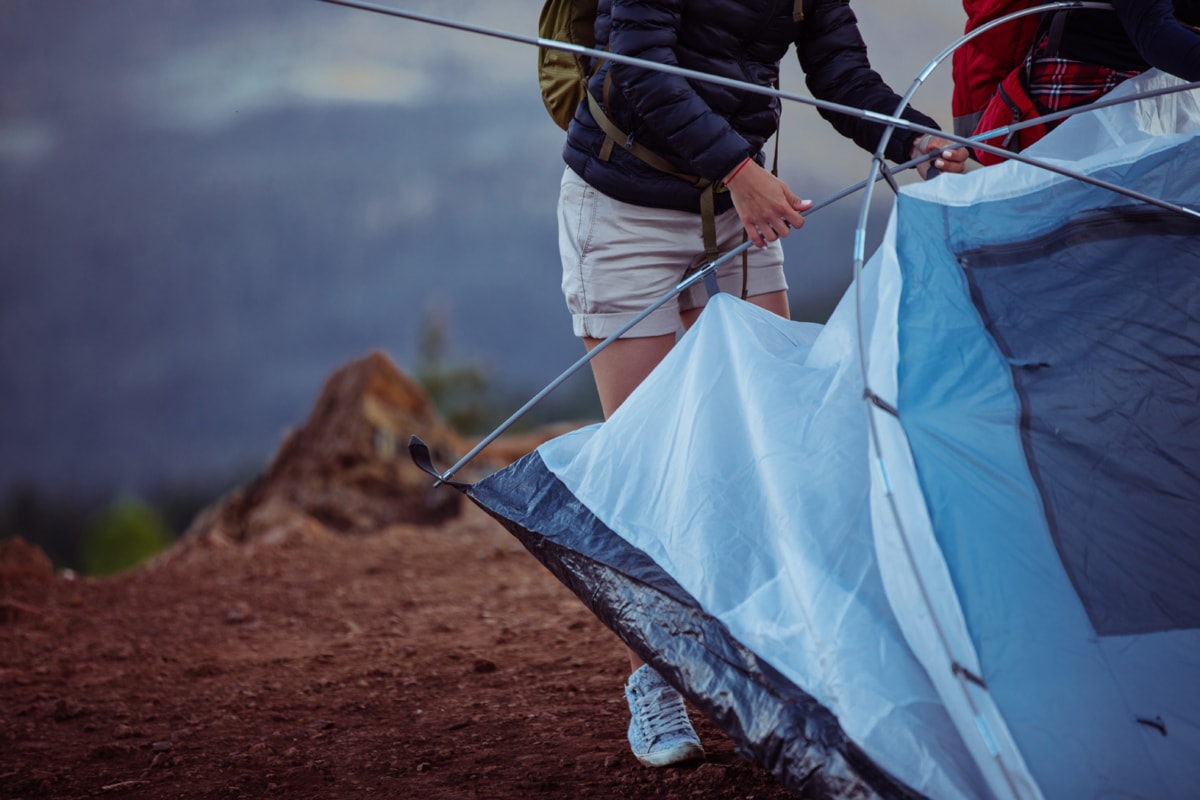
Most two-person ultralight (UL) tents weight less than 3 pounds, while some single sleepers weigh less than two pounds.
Maybe weight isn’t something that matters as much to you. Whether you are going on a shorter trip, or want some extra space to stretch your legs, there are some great options available. Weighing more than three pounds, most of these tents are made of rugged materials and offer more than enough space.
I’ve picked five of the top backpacking tents in this area that I feel offer you more space, extra features, and more comfort than a typical minimalist tent.
Durability
You never want to find yourself in a position where your tent breaks. Tents are made from a wide variety of materials—some are durable, others not so much. You want a tent with a floor, fly, and canopy that are made of durable materials like nylon or polyester. Because if you’re going to pay a little extra for a reliable tent, you want it to last.
Now, if there’s one thing you want, it’s a tent with a good denier.
Den-what? Denier is the standard unit of measurement for individual fiber thickness within the material. Simply put, a 30-denier nylon material will be thinner than a 70-denier nylon material. The more deniers you have, the more durable and potentially waterproof your tent is.
Easy, right?
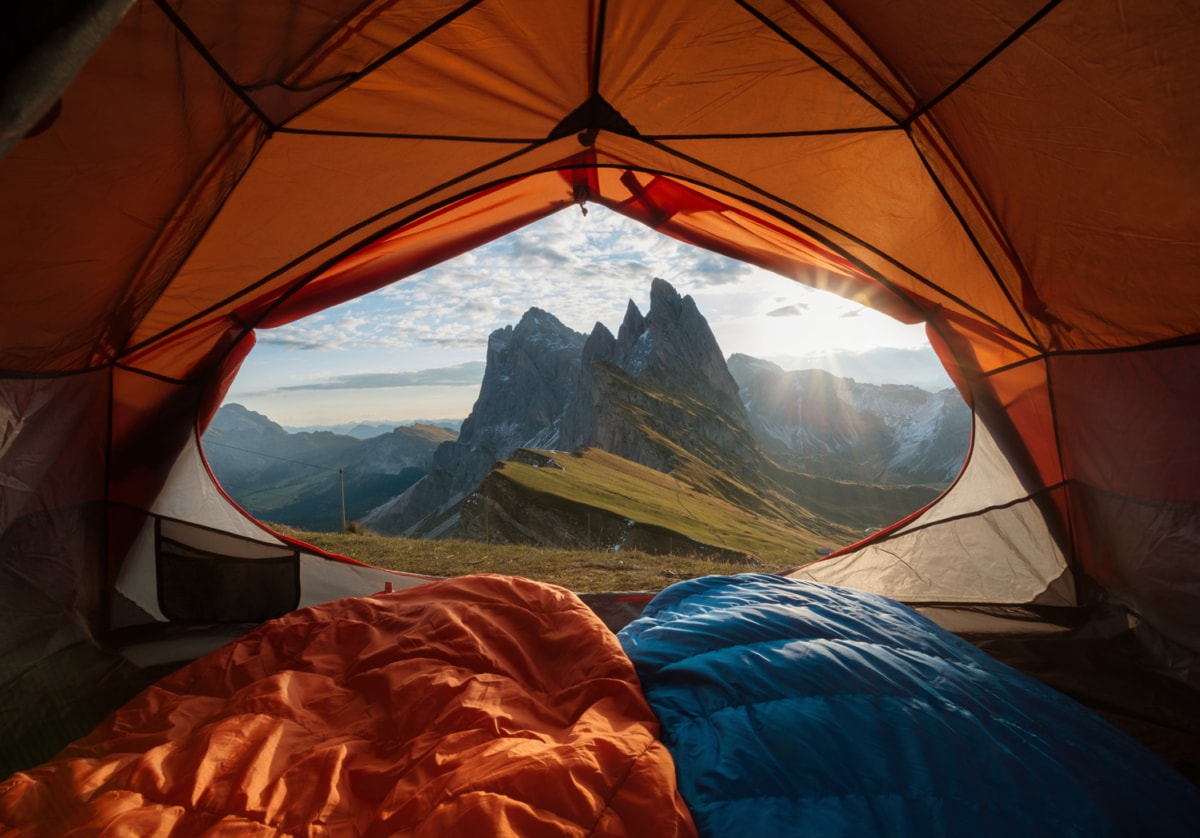
In the world of tents, you will see different denier ratings for the floor, canopy and fly. These ratings differ because not all areas of the tent require the same amount of durability. Tent floors will always have higher ratings, as that’s where the greatest amount of wear usually occurs, while the canopy and fly can be thinner and lighter.
In the ultra-lightweight department, it’s not uncommon to see tent floors in the 20 to 30-denier range. While these work, I wouldn’t include them in a list of the best backpacking tents if they didn’t. I recommend a delicate approach when setting up and storing.
But if you’re looking for something a little more robust, keep an eye out for 50 to 70-denier floors. Remember, a higher denier count is heavier. You need to think about how and where you will use your tent. For softer ground, a lower denier count may work.
Freestanding vs. Semi-Freestanding
A freestanding tent is just like its name sounds. Once the poles are set up, it can stand alone without any stake or additional support. This usually means that the poles attach at the corners of the tent, and the tent is fully supported and at its full size.
A semi-freestanding tent means that additional stakes or support is required for the tent to reach its full size to be stable. In this case, the pole on one end of the tent will attach right in the middle of the edge, not at the corner. This means you’ll need a couple of stakes at the corners in order to pull the tent to its full size.
As you might have guessed, these two styles fall into different weight classes. The semi-freestanding design focuses on trimming weight however possible. While this is effective, setting this tent up can be difficult, especially in poor weather.
The freestanding version is often found in well-rounded tents that prioritize space, durability, and features.
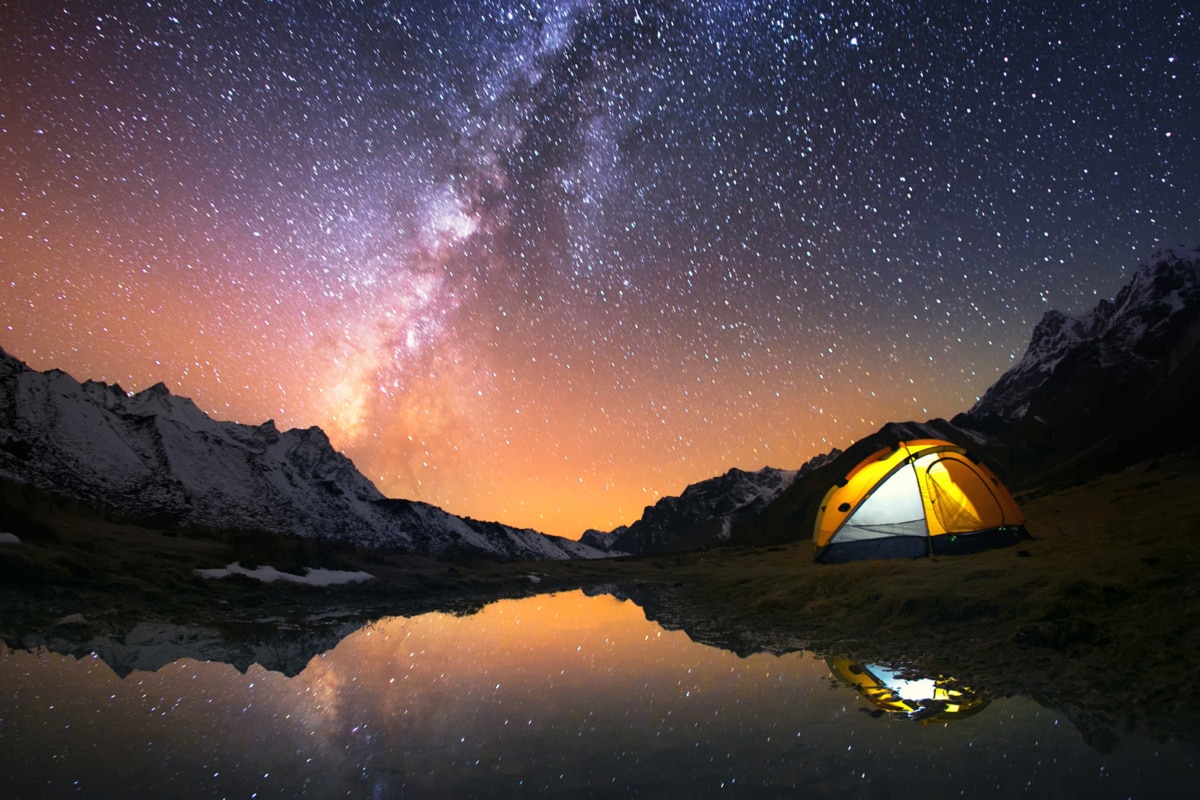
So, which should you get?
That’s going to depend on what you need! Just like durability and weight, you need to determine your priorities, and what the right backpacking tent looks like to you. If you’re not concerned with a little extra setup time, aim for the semi-freestanding option and save yourself some weight.
If you prefer a quick and painless setup process, then I’d recommend going with a freestanding tent.
Spacing
This is one area that splits the hiking community. Some hikers love having a little extra space, while others like sleeping in their own personal cocoon. There’s nothing wrong with either approach. It really comes down to what you want to get out of your tent.
So, what does your best backpacking tent look like?
There’s no easy way to answer this question. Start by taking a moment to really think about what you need most. Do you want extra space, or do you value portability and would rather trim off a few pounds?
You’ll also want to consider things like your height, shoulders, and the height of the tent. If you’re taller than Big Foot, you may need a bigger tent. Look at each tent’s specs to see if they fit your needs.
Design
It’s the little design features that can launch a tent from obscurity into a list of the best backpacking tents on the market.
One of these features is the bathtub design for tent floors. This lifts the seam where floor and walls meet several inches above the ground, decreasing the chance for leaks and helping to create a more durable platform.
I also like tents that include enough mesh pockets. You can never have enough storage for lights, music, gear, and other items that you like to keep accessible.
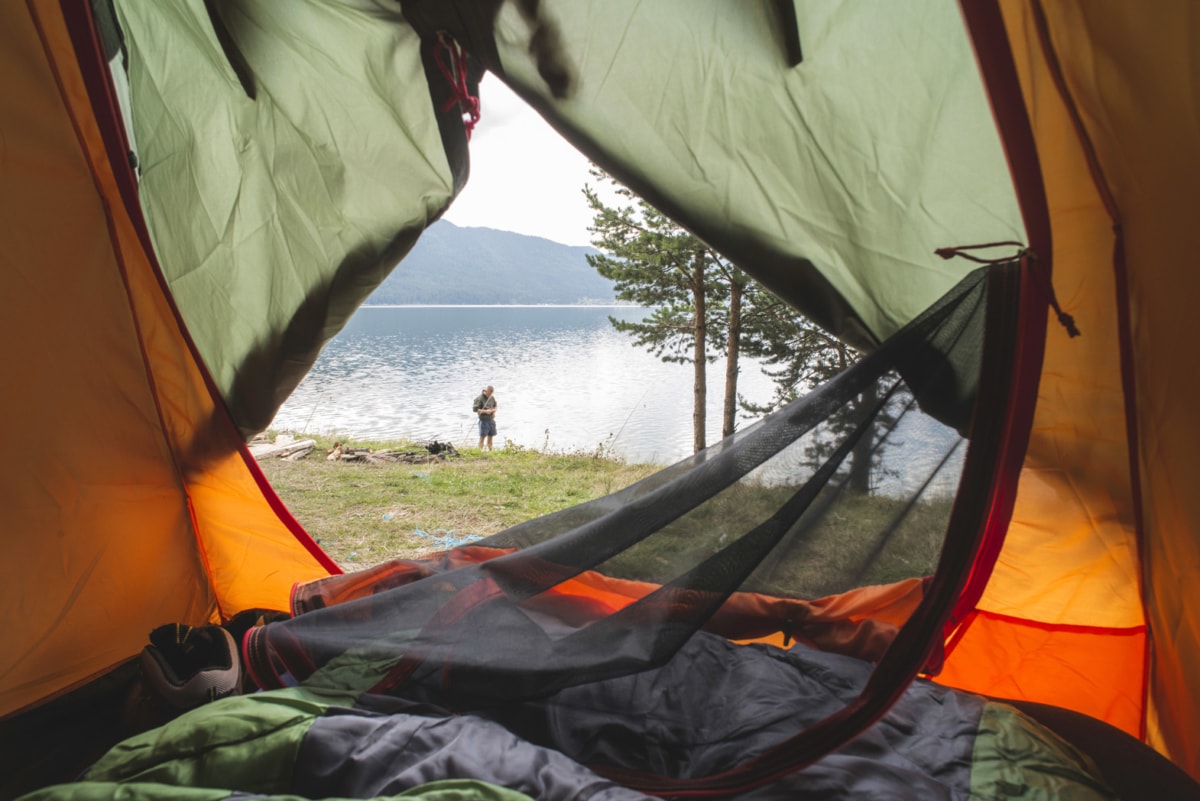
A few other features I enjoy are internal access to the fly air vents, symmetrical floor design for more room, vertical sidewalls, and pole designs that are easy to assemble.
Alright, but what am I getting at here?
Take a good hard look at any tents you’re considering, and see which one has the features you want. Don’t let yourself get sold on features you don’t care about. Focus on what matters most, and you’ll find the right tent for your hiking trips.
Packed Weight vs. Minimum Weight
Let’s take a moment to clear up a common tent misconception you’ll see everywhere online. You’ll often see the phrases “minimum weight” and “packed weight” listed for tents, which can be a little confusing when weight is a serious concern that influences the purchasing process.
Packed weight refers to the full kit-you buy, and what comes out of the box. That means it includes the tent body, fly, poles, stakes, guy lines, repair gear, and stuff sacks.
Minimum weight refers to only the essentials that you absolutely need to pitch the tent in the wilderness – namely, the tent body, fly, and poles.
While stakes and guy lines are important – and nearly essential for foul weather –it’s often assumed that they’re not included in minimum weight requirements.
I’ve decided to use packed weight as the standard for this list. The only way to increase the longevity of your tent is to use it as its intended. It’s that simple.
And there you have it! My complete list of the best backpacking tents for hikers and adventure seekers of all types. Whether you prefer a lightweight design, or a fortress in a pack, you now know what to choose.
Get out there, stake your poles, and conquer the wilderness.
READ MORE:
Backpacking Tents FAQs
-
What type of tent is best for backpacking?
For backpacking an ultralight tent made of silnylon or silpoly is the best choice.
-
Is a 4-pound tent too heavy for backpacking?
A 4-pound tent is not too heavy for backpacking. There are much lighter tents out there, but they also cost more.
-
Is a 5-pound tent to heavy for backpacking?
A 5-pound tent is fine for backpacking for two people, but it’s a bit too heavy for one person.
-
How heavy is too heavy for a backpacking tent?
A backpacking tent that weighs more than 4 pounds per person is pushing the limit of what’s too heavy for backpacking.
-
Are MSR tents worth the money?
MSR tents are definitely worth the money if you want good design, good materials, and a fantastic warranty.
